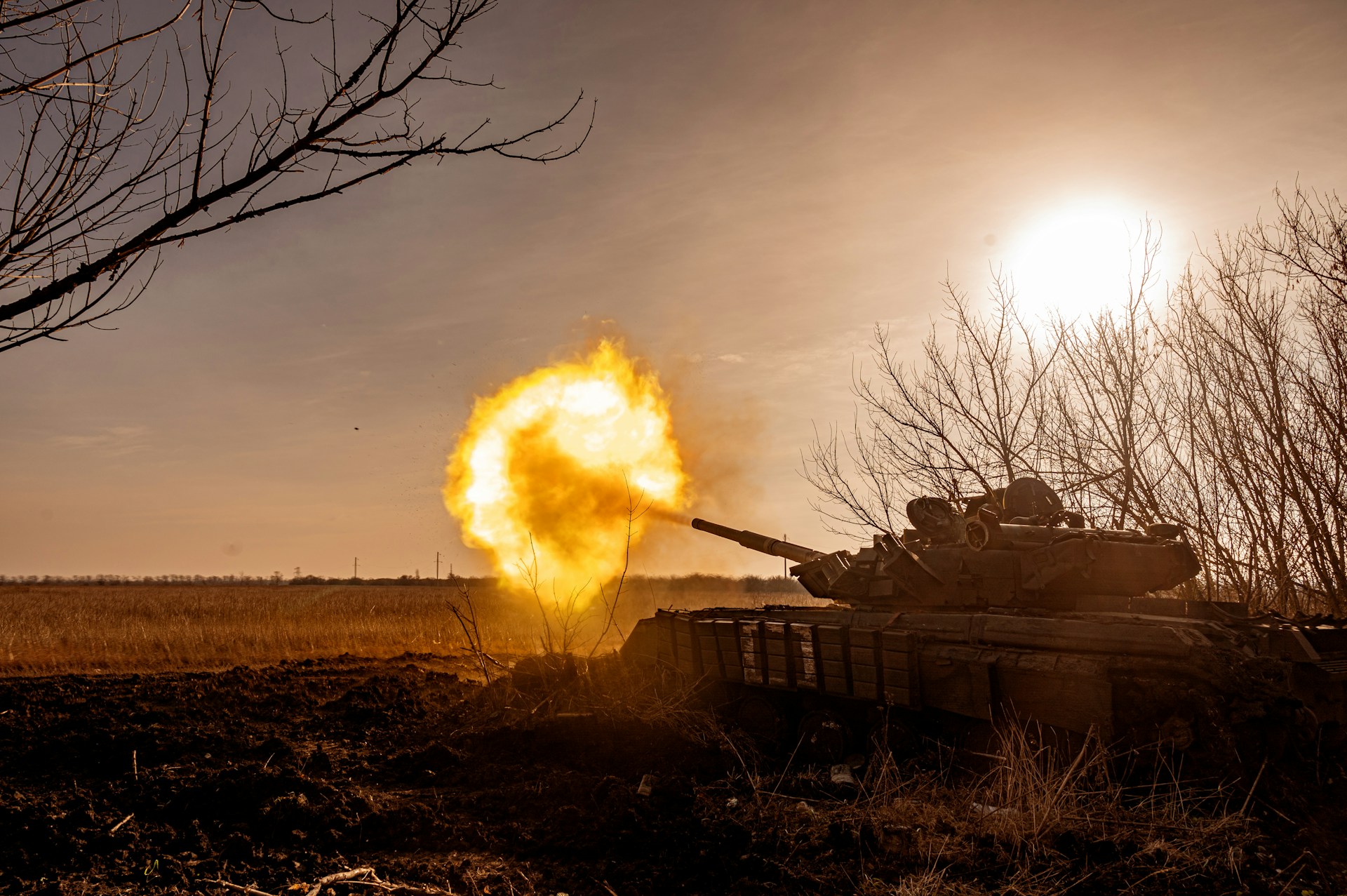Millions of Ukrainians want to see an end to the Russian-Ukrainian war. In this post, we review some pressing issues in the East and propose a set of solutions.
Ending the war
-
Buy loyalty of the indifferent, which is majority in the region, by increasing salaries of state employees and pensions by 20-50%, even if temporarily.
-
Provide an exit option to the locals committed to insurgency by offering amnesty to those who were not involved in grave crimes (murder, torture, etc.), and stipulate that the amnesty will not apply to those who will continue to fight.
-
Send a message that corruption is over by prosecuting most flagrant cases of local corruption, including new cases in the recaptured regions (e.g., abuse of the humanitarian aid), systematically firing corrupt officials and neutralizing their networks, and staffing the state offices with new people, loyal to Ukraine and the region.
Sustaining peace
- Rely on the middle class by helping them restart their businesses through tax forgiveness, cheap credit, training and capacity building.
- Create independent local media and activist groups from the pool of regional bloggers, volunteer networks supplying the military, local entrepreneurs and farmers
- Create jobs by employing locals in reconstruction projects, providing incentives for businesses to enter the region, and simplifying regulation for the small and medium size enterprises
The war will be over, one way or another, maybe as early as in a month. This will be a pivotal moment in Ukraine’s history but everyone should understand that the end of the war does not mean a lasting peace. The scars of the war are already running deep and the short-run problems (unemployment, shortages of essential goods, destroyed infrastructure) are likely to continue to alienate locals in the East to the new Ukrainian government. Without solving these problems, a new wave of violence may erupt.
Institutional poverty: When the conflict is over and a city (town, village) is liberated from the terrorists, the key problem is that the local ruling elite (mayors, political parties, police) is discredited by cooperation with the terrorists as well as affiliation with the Party of Regions. Indeed, as Ukrainian forces are taking control over cities in the East, many from the local elites flee in fear of being prosecuted. The level of trust is low and the power vacuum makes the recovery of normal life painfully slow.
This vacuum has to be filled in as quickly as possible. After a city is taken over by the Ukrainian forces, there should be a group of administrators ready to run the city to establish a clear and effective system of temporary governance. The President can appoint temporary mayors and the like with increased powers so that decision-making can be fast and more decentralized. The new administration should “import” police and officials from other locations as well as recruit locals with clean records. Unfortunately, the latter may be a weak source for staffing. For example, the Ministry of Internal Affairs is running its staff from the “terrorist occupied” territories through polygraphs and estimates that 50-80 percent of its staff collaborated with terrorists. Since the region is ripe with endemic corruption and strong ties to terrorism, perhaps top local administrators, city council members, judges, and other key local officials should take a polygraph test to ensure that they are not compromised. Other policies can also be employed depending on specifics of the town. To further ensure that the new power is not corrupted as much as the previous one, the government can set up hotlines to report corruption and use all legal powers to punish corrupt officials as well as follow the experience of other countries and report salary of each public servant (for example, California puts all information about salaries of its public employees online).
To provide “carrots” to the new people in local governance, the government should raise their salaries at least temporarily because their work involves increased risk.
Finally, the public should have access to independent local media—rather than the current media serving special interests—to ensure that people have access to objective information to forge high trust between new government and the public. Given enormous interest of media in the events in Eastern Ukraine, this objective should be easy to achieve. National media should introduce a number of series, programs that monitor activities in the area and create a more positive image of the East.
Lack of security: After the terrorists raped the cities they controlled, people in these cities have a great sense of insecurity and lack basic goods and services such as food, water, electricity. It will take some time before life in these cities goes back to normal, but every effort has to be made to ensure that people have basic needs satisfied and are protected from more violence. For example, the government can use international aid to ship in goods (e.g., medicine and food) into affected areas, use volunteers (locals and from other parts of Ukraine) to assist police in patrolling cities, use resources (power generators, field kitchens, water filters) of the State Emergency Service and Ukraine’s Armed Forces.
Unemployment: Because many businesses are destroyed or shut down in the conflict zone, high unemployment is a major threat for stability. The government should provide opportunities to get employment. There are several possibilities. First, the government can use reconstruction projects with the emphasis on labor-intensive projects (at least initially) such as debris clearing, fixing roads and human settlement, restoring electricity and telecommunication, economic and social infrastructure, etc. Second, the government should restore employment in the public sector (hospitals, schools, etc.) as soon as possible. Third, the government can place orders with local state owned enterprises to increase local employment. For the latter, there is a risk that orders will go to local corrupt officials. Maximum transparency of tenders in this area is vital, and should be one of the priorities for the entire country.
Fourth, the government can provide 1-3 month apprenticeship training courses (plumbers, welders, bricklayer) for local people to improve their skills. This system of practical education could be later used as a starting point for region-wide initiatives of transforming focus (e.g. from mining towards IT) and enhancing human capital.
Stagnant business: The terrorists routinely confiscated or destroyed business assets. As result, economic activity is close to a complete halt. To revitalize, local businesses need abundant, cheap loans. There are several possibilities. First, the government can provide a subsidy (e.g., pay a fraction of the percent on loans) but the banks have to have skin in the game to ensure high quality of loans. Second, the government can direct state banks to channel some of their lending to the post-conflict zone and provide some insurance on the loans in the zone. Perhaps, the government can set up a development bank to coordinate these activities. Third, the government can encourage micro-finance funding of projects in the East of Ukraine. This source may be particularly valuable because the industry in the East was dominated by large firms but small/medium size enterprises (SMEs) are engines for high employment, innovation, and economic growth. Standard banks are likely to deny credit to SMEs in the East because of high risk. However, one can get credit to these SMEs via micro-finance banks similar to those working in developing countries and post-conflict zones. Fourth, the government can use help from the World Bank, the European Bank for Reconstruction and Development and others to provide cheap credit to the businesses affected by the war. Finally, infrastructure investment could be done via private-public partnerships.
We do not recommend using special economic zones with blanket tax breaks and poor law enforcement. (The benefit of two such zones in the Donetsk oblast appears to be minimal while their reputation as a place to avoid taxes is clear.) However, some targeted measures (e.g., do not charge penalty on tax liabilities of destroyed businesses, allow tax holidays for a limited period, or temporarily permit accelerated amortization) may be effective tools to stimulate reconstruction and accumulation of capital.
Restoring Infrastructure: Now is a great opportunity to start replanning and optimization of infrastructure (e.g. railways/roads). It might somewhat early to say, but it is important to keep Donetsk well connected to Kyiv. An idea of high-speed train connection (real high speed connection 250+ km/hour) has been around for a while. The planning should start now when many bridges/roads are destroyed and substantial construction is required. A similar point applies to motorway construction.
A serious challenge is restoring capacity of the manufacturing plants that have been destroyed during the military conflict. The source of funds, safeguards against diversion of funds, and decisions about which infrastructure to restore will require a systematic approach. This might be an opportunity to modernize the inefficient aging industries in the East.
Coordination of foreign aid: Ukraine is likely to get a lot of aid from donor countries and international organizations. The government should coordinate activities of these organizations. For example, Georgia assigned each agency to a specific task to make responsibility clear and to avoid waste/duplication, with EBRD being responsible for roads, World Bank being responsible for power and water lines, etc.
Summary: After the war, we are facing destroyed infrastructure, diminished human capital (some of the dislocated people might choose not to return, and this process might not be random, with more skilled people more likely to find employment at the new place), inefficient state-run enterprises, and poverty. People in Eastern Ukraine are likely to distrust the new government, and do not expect any changes for the better. Higher salaries, cheap credit, tax breaks, and new jobs are a good way to prove the opposite. The key elements of a program to achieve these goals include employment-oriented reconstruction projects, strong incentives for investment in both infrastructure and business, and in longer run reviewing and, if necessary, phasing out the state-run enterprises in the medium and long run as well as intensive programs to retrain workers to deal with inevitable skills mismatch. Of course, a successful implementation of reconstruction of Eastern Ukraine requires rule of law, dealing with corruption, and building a strong, politically engaged middle class.
Застереження
The authors do not work for, consult to, own shares in or receive funding from any company or organization that would benefit from this article, and have no relevant affiliations


